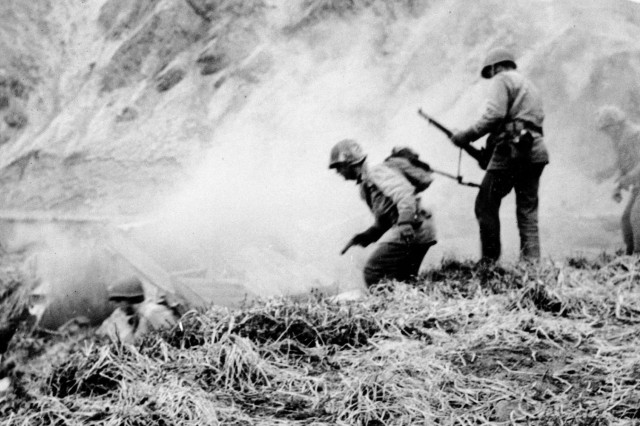80 YEARS OF REMEMBERING PEARL HARBOR.
"Yesterday, December 7, 1941 a date which will live in infamy the United States of America was suddenly and deliberately attacked by naval and air forces of the Empire of Japan."
- President Franklin D. Roosevelt
_______
7ID in WWII
On 1 July 1940, the 7th Division was formally reactivated at Camp Ord, California, under the command of Major General Joseph W. Stilwell. Most of the early troops in the division were conscripted as a part of the US Army's first peacetime military draft. The 7th Division was assigned to III Corps of the Fourth United States Army, and transferred to Longview, Washington, in August 1941 to participate in tactical maneuvers. Following this training, the division moved back to Fort Ord, California, where it was located when the Japanese attack of Pearl Harbor caused the United States to declare war. The #Bayonet Division proceeded almost immediately to San Jose, California, arriving on December 11, 1941 to help protect the west coast and allay civilian fears of invasion. For the early parts of the war, the division participated mainly in construction and training roles. Subordinate units also practiced boat loading at the Monterey Wharf and amphibious assault techniques at the Salinas River in California.
On 9 April 1942, the division was formally redesignated as the 7th Motorized Division and transferred to Camp San Luis Obispo on April 24, 1942. Three months later, divisional training commenced in the Mojave Desert in preparation for its planned deployment to the African theater. It was again designated the 7th Infantry Division on 1 January 1943, when the motorized equipment was removed from the unit and it became a light infantry division once more, as the Army eliminated the motorized division concept fearing it would be logistically difficult and that the troops were no longer needed in North Africa. The 7ID began rigorous amphibious assault training under Marines from the U.S. Marine Corps Fleet Marine Force, before being deployed to fight in the Pacific theater instead of Africa. USMC General Holland Smith oversaw the unit's training.
Elements of the 7th Infantry Division first saw combat in the amphibious assault on Attu, western-most Japanese entrenchment in the Aleutian chain. Elements landed on May 11, 1943, and fought a bitter battle over freezing tundra against Japanese resistance, finally defeating the Japanese at Chichagof Harbor. In August 1943 elements of the Division took part in the assault on Kiska, only to find the island deserted by the Japanese. With the Aleutians secured, the Division moved to Hawaii, where it trained in amphibious landing technique and in jungle warfare. On January 31, 1944 the Division landed on islands in the Kwajalein Atoll in conjunction with the 4th Marine Division, and in a week of heavy fighting, wrested them from the Japanese. Elements took part in the capture of Engebi in the Eniwetok Atoll on February 18, 1944. The Division then moved to Oahu, T. H., remaining there until mid-September when it sailed to join the assault on the Philippines.
On October 20, 1944, the Division made an assault landing at Dulag, Leyte, and after heavy fighting secured airstrips at Dulag, San Pablo, and Buri. The troops moved north to take Dagami, October 29, and then shifted to the west coast of Leyte, November 26 and attacked north toward Ormoc, securing Valencia December 25. An amphibious landing by the 77th Infantry Division effected the capture of Ormoc, 11 December 1944, and the 7th joined in its occupation. Mopping up operations continued until early February 1945. Next D-day for the Division was 1 April 1945, when it made an assault landing on Okinawa. It drove from the west to the east coast on the first day and engaged in a savage 51-day battle in the hills of southern Okinawa.
#PearlHarborRemembranceDay #NationalPearlHarborRemembranceDay
Source: Wikipedia.com, History.army.mil,
National Archives, Library of Congress








Social Sharing